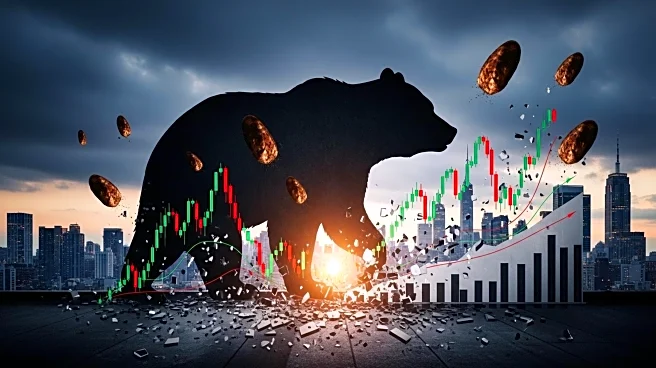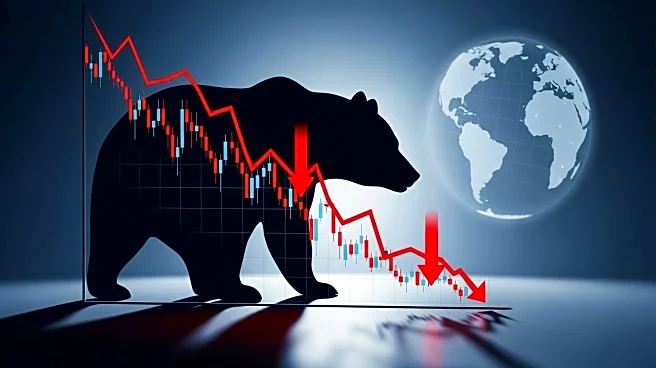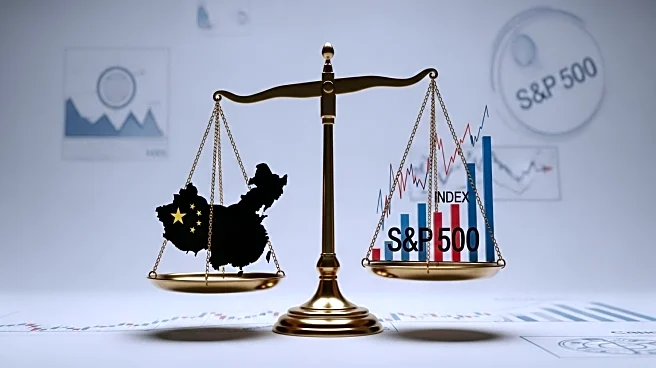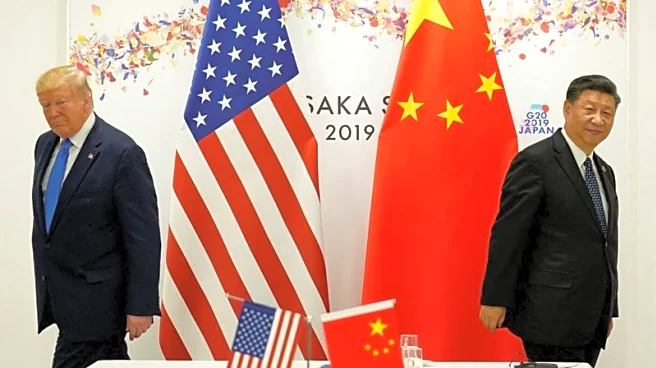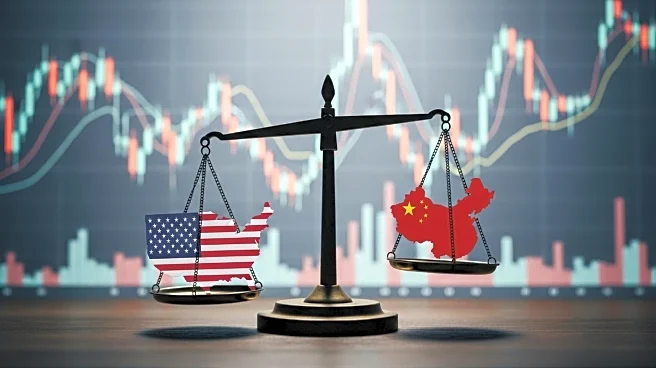What's Happening?
On October 10, 2025, U.S. stock markets experienced a significant downturn following President Trump's announcement of potential tariff increases on Chinese imports. The Dow Jones Industrial Average fell by 878.82 points, closing at 45,479.60, marking its worst day since April. The S&P 500 and Nasdaq also saw substantial declines, dropping 2.7% and 3.6% respectively. The tariff threats came in response to China's restrictions on rare earth exports, which are crucial for manufacturing various products. This escalation in trade tensions between the U.S. and China led to widespread stock sell-offs, affecting major tech companies and smaller businesses alike.
Why It's Important?
The potential increase in tariffs on Chinese imports could have far-reaching implications for the U.S. economy and global trade. Higher tariffs may disrupt supply chains, increase costs for manufacturers, and lead to higher consumer prices. This could further strain relations between the world's two largest economies, impacting international trade agreements and economic stability. The stock market's reaction underscores investor concerns about the economic fallout from such trade policies, which could lead to reduced corporate profits and slower economic growth.
What's Next?
The market may continue to experience volatility as investors react to ongoing trade tensions and potential policy changes. President Trump's decision not to meet with China's leader, Xi Jinping, as previously planned, could further escalate the situation. Businesses and policymakers will likely monitor developments closely, as any changes in tariff policies could necessitate adjustments in trade strategies and economic forecasts. The Federal Reserve's interest rate decisions may also be influenced by these developments, as they seek to balance inflation concerns with economic growth.
Beyond the Headlines
The tariff threats highlight the complex interplay between international trade policies and domestic economic conditions. The reliance on rare earth materials for technology and manufacturing underscores the strategic importance of these resources in global trade. Additionally, the situation raises questions about the long-term sustainability of current trade practices and the need for diversified supply chains to mitigate geopolitical risks.

